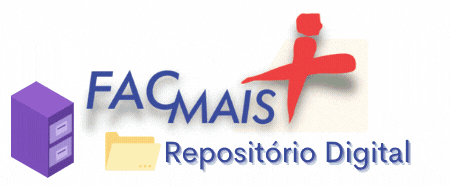Use este identificador para citar ou linkar para este item:
http://65.108.49.104:80/xmlui/handle/123456789/120| Tipo: | Trabalho de Conclusão de Curso |
| Título: | A GINÁSTICA COMO PRÁTICA FORMATIVA DA ESCOLA |
| Autor(es): | SILVA, Lucas Souto da |
| Primeiro Orientador: | FERREIRA, Arita Montanini |
| Resumo: | O corpo humano está sempre em movimento, exercitando-se para sobreviver e também adequar-se ao meio ambiente. Pensando assim, o corpo humano está sempre fazendo ginástica de diversas maneiras diferentes. Nos registros da humanidade vemos que essa prática pode ocorrer de forma pedagógica e lúdica ou como modalidade esportiva. Deste modo, o objetivo do presente trabalho foi apresentar a ginástica como prática formativa da escola nas aulas de Educação Física e esclarecer sobre seus benefícios e suas contribuições para o desenvolvimento psicomotor e social dos (as) educandos. Buscou-se também fomentar a formação do (a) docente para que este possa mediar o ensino de forma confiante dos conteúdos pertinentes à ginástica no ambiente escolar. Trata-se de um estudo bibliográfico de cunho qualitativo, com base em teóricos como Carmen Lucia Soares (1994), Vanessa Dias Possamai (2018), José Carlos de Freitas Batista (2010), para discutir sobre o desenvolvimento motor e das práticas de ensino para a formação humana da escola. Para tanto, foram analisados o processo que envolve desde a sistematização da ginástica e seus conceitos; o desenvolvimento psicomotor e social do indivíduo; um estudo sobre os documentos e leis que regem sobre o ensino do elemento da cultura corporal ginástica na escola brasileira: como a BNCC e os PCNs. Ao fim, foi feita a reflexão de que é imprescindível incentivar a práxis desde os anos iniciais da formação do indivíduo nas aulas de Educação Física. Com este trabalho, percebemos que tanto a formação docente, quanto os recursos disponíveis na escola carecem de incentivos e melhorias. |
| Abstract: | The human body is always in motion, exercising to survive and also to adapt to the environment. With that in mind, the human body is always doing gymnastics in many different ways. In the records of humanity we see that this practice can occur in a pedagogical and playful way or as a sport. Thus, the objective of the present study was to present gymnastics as a formative practice of the school in Physical Education classes and to clarify its benefits and contributions to the psychomotor and social development of the students. It was also sought to promote the training of the teacher so that he can confidently mediate the teaching relevant to gymnastics in the school environment. This is a qualitative bibliographical study, based on theorists such as Carmen Lucia Soares (1994), Vanessa Dias Possamai (2018), José Carlos de Freitas Batista (2010), to discuss the motor development and teaching practices. for the human formation of the school. Therefore, the process that has been involved since the systematization of gymnastics and its concepts was analyzed; the psychomotor and social development of the individual; a study on the documents and laws governing the teaching of the gymnastic body culture element in the Brazilian school: how the BNCC and the PCNs. At the end, it was made the reflection that it is essential to encourage praxis from the early years of the formation of the individual in Physical Education classes. With this work, we realize that both teacher education and the resources available at school need incentives and improvements. |
| Palavras-chave: | Ginástica Educação Psicomotricidade |
| CNPq: | CNPQ::CIENCIAS DA SAUDE::EDUCACAO FISICA |
| Idioma: | por |
| País: | Brasil |
| Editor: | Faculdade Facmais |
| Sigla da Instituição: | FACMAIS |
| metadata.dc.publisher.department: | Departamento 1 |
| Tipo de Acesso: | Acesso Aberto |
| URI: | http://65.108.49.104:80/xmlui/handle/123456789/120 |
| Data do documento: | 16-Dez-2019 |
| Aparece nas coleções: | Trabalho de Conclusão de curso |
Arquivos associados a este item:
| Arquivo | Descrição | Tamanho | Formato | |
|---|---|---|---|---|
| Lucas Souto da Silva.docx-compactado.pdf | 270.88 kB | Adobe PDF | Visualizar/Abrir |
Os itens no repositório estão protegidos por copyright, com todos os direitos reservados, salvo quando é indicado o contrário.
